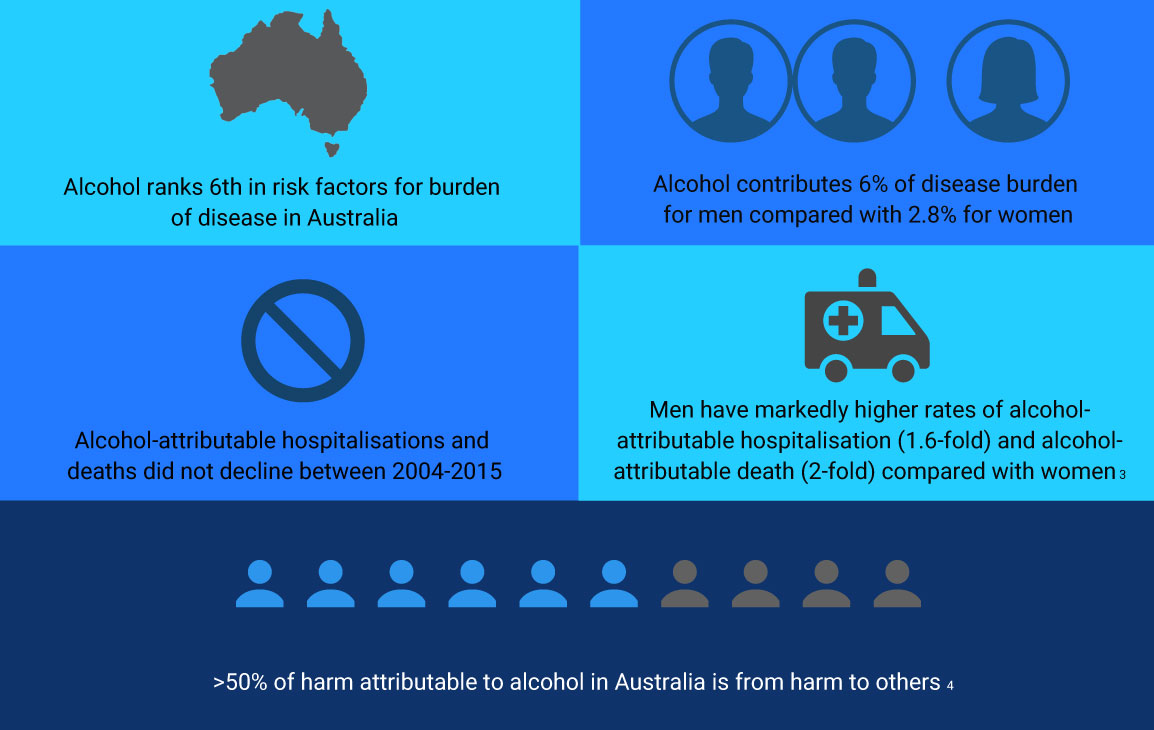 By Dr Michael Christmass, Consultant in Addiction Medicine
By Dr Michael Christmass, Consultant in Addiction Medicine
A poll commissioned by the Foundation for Alcohol Research and Education conducted in April 2020 provided a sobering update on Australian alcohol use during the COVID-19 pandemic.
Twenty percent of households reported purchasing more alcohol than usual and, of these households, 70% reported using more alcohol than usual. In these households, 34% admitted daily alcohol use and 32% were concerned about alcohol use in the home. Another consequence of COVID-19 may be more patients presenting to medical practitioners with alcohol-related problems. Many will be male.
Let’s take a brief look at draft guidelines regarding alcohol consumption.
It is clear that problematic alcohol consumption is more common amongst males than females (Table 1). Men experience more overall harm from alcohol than women despite the well-established outcome that, at higher levels of consumption, risk of harm increases faster for women than men (Table 2). Importantly, more than 50% of harm attributable to alcohol in Australia is from harm to others. When we help a man with alcohol use disorder, we reduce harm to another individual.

Latest advice
Data on lifetime and single occasion risk (Table 1) correspond to outdated NHMRC guidelines (2009). In December 2019, based on updated evidence, the NHMRC released Draft Australian Guidelines to Reduce Health Risks from Drinking Alcohol.
The lifetime risk guideline has been reduced from 14 to 10 standard drinks a week. Single occasion risk remains at four standard drinks. Based on mathematical modelling and systematic evidence reviews, risk of death from alcohol-related disease or injury is less than one in 100 where alcohol is consumed within this guideline. Modelling indicates risk of death caused by alcohol increases with total amount consumed (e.g. per week) but also in consuming over fewer days (i.e. higher consumption/episode).

It is important to recognise uncertainty assigning level of risk to any specific amount of alcohol consumption. This is in part due to doubt over the existence and magnitude of any cardioprotective effect of alcohol. Further, alcohol is known to cause cancer in humans (Group 1 carcinogen). Evidence from systematic reviews suggest alcohol consumption as low as one standard drink per day is associated with increased risk of breast and gastrointestinal cancers.
Finally, the 2009 guidelines are old and updated guidelines should be released in 2020. It hoped that a brief summary of the new information available for screening, assessing and treating men with alcohol use issues will be ready soon.
Key messages
- Alcohol purchase and consumption has increased during the pandemic
- Problematic drinking is more common in males
- New guidelines are being released this year
References available on request.
Questions? Contact the editor.
Author competing interests: None to disclose.
Disclaimer: Please note, this website is not a substitute for independent professional advice. Nothing contained in this website is intended to be used as medical advice and it is not intended to be used to diagnose, treat, cure or prevent any disease, nor should it be used for therapeutic purposes or as a substitute for your own health professional’s advice. Opinions expressed at this website do not necessarily reflect those of Medical Forum magazine. Medical Forum makes no warranties about any of the content of this website, nor any representations or undertakings about any content of any other website referred to, or accessible, through this website.

